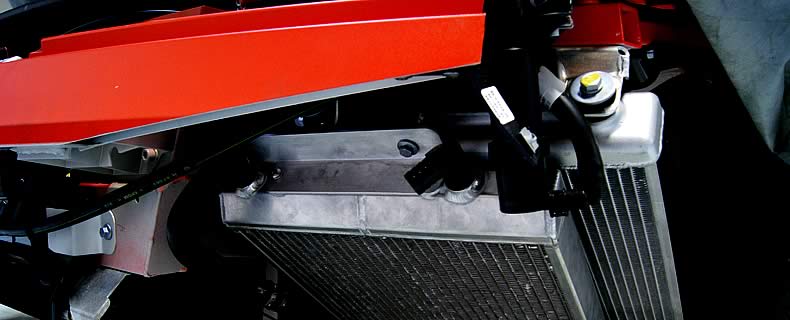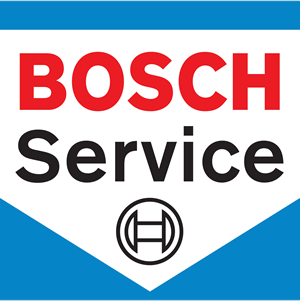
Cooling System
enhance performance of a later model diesel-powered pickup with cold air intake systemenhance performance of a later model diesel-powered pickup with cold air intake systemChevy Duramax 6.6L engine - enlarge
Have a later model diesel-powered pickup and need more power to haul and tow? One well accepted way to obtain greater horsepower and torque is to install a cold air intake system. As an added benefit these systems can enhance performance with the same or even improved fuel economy.
A cold air intake system reduces the temperature of intake air by capturing cooler air from outside, not from the hot engine compartment. Cold air is denser than warm, humid air so it contains more oxygen for better combustion.
Cold air intake systems also usually have larger diameter intakes compared to OEM (original equipment manufacturer) ones. Therefore, they can take in more air, again providing more oxygen for better combustion. Designing a direct airflow path and providing smoother interior surfaces help reduce air resistance for increased airflow.
These and other design features have been incorporated in a new line of cold air intakes developed by filter maker AMSOIL and air intake manufacturer Injen Technology. A key feature is Variable Induction Technology, an air induction system that fills the plenum with air, giving added power when needed.
The unit's Diesel Power Box uses a composite mix of glass-filled nylon and polypropylene materials for quieter operation. Unlike plastic components, they do not distort even at very high temperatures. A built-in velocity stack streamlines the air turbulence into the plenum air chamber by way of the multi-power induction system. The Power Box was designed for best cooling efficiency and the ability to resist high temperatures. A tapered plenum chamber reduces turbocharger lag.
The Injen/AMSOIL Diesel Air Intake Systems is made of aerospace alloy T6 aluminum with stainless steel clamps and tig-welded ports and brackets. They are dyno-tuned for peak performance. The direct bolt-in design makes installation quick and easy.
Since filtering is key to protecting and engine from damaging dust and dirt. These cold air intakes are equipped with AMSOIL's dry media Ea nanofiber technology air filters. Nanofiber technology is 99.53-percent efficient. The 360-degree accordion style AMSOIL Ea filter element provides 500-percent more surface area. AMSOIL Ea filters can be cleaned using a shop vac. A stainless steel pre-filter deflects larger debris to prevent premature build up of dirt.
The Injen/AMSOIL Power-Flow Diesel Air Intakes are available for the 6.6L Duramax V8 used in 2005-2007 Chevrolet and GMC trucks, the 5.9L Cummins Six installed in Dodge Ram 2500s and 3500s and the Ford PowerStroke V8 available in Ford F250, F350 and F450 trucks. Depending on the truck and driving conditions, horsepower increases can range from 8- to 15-percent with corresponding improvement is torque.
Bill Siuru, PhD, PE
Coolant hoses can certainly wear out in the life span of your vehicle -- in fact, consumers reported in a national survey that two to three times as many radiator hoses failed while driving in their vehicle's fifth year than its fourth. And according to the Car Care Council, 30 percent of the vehicles needing under-the-hood repairs needed new hoses or belts.
The average four-year-old car has been driven nearly 70,000 miles, a mileage interval that most technicians believe is the time many parts wear out. Coolant hoses are no exception and the age of the car is a good indicator of when replacement should be considered.
Traditionally, hoses have been visually inspected for failure from the outside. But with today's cars, that method isn't always the best since hoses usually fail from the inside where weakened elements can't be seen and their symptoms not always obvious.
Therefore, replacement of the coolant hoses, especially the radiator hoses, every four years is recommended, regardless of physical appearance.
The materials now used in your engine's construction are different than those of years ago. Cast iron has been replaced with aluminum, plastic and brass. Used together with the coolant, which is also conductive, these dissimilar materials can create a sort of battery with the hose conducting electricity through itself. The electrical current can create tiny cracks in the hose tube which eventually weaken and cause the hose to fail. This phenomenon is called electro-chemical degradation or ECD.
The higher operating temperatures in cramped engine compartments result in hotter temperatures for hoses. While increased temperatures result in greater engine efficiency, heat also increases the rate of ECD in hoses! In fact, for every 18-degree increase in temperature, the rate of ECD doubles. Heat can also weaken some t reducing the overall burst pressure and cooling system performance.
Vibration from rough idling engines weakens other types of hose reinforcements -- again leading to premature failure. Also, abrasion from sharp surfaces within the engine compartment can slowly rub through the outer cover of the hose, eventually causing it to burst. Cuts and nicks on the outside of the hose also contribute to premature failure, but oil is a more common threat. A hose exposed to oil will be prematurely weakened since the oil actually attacks the rubber compound on the hose cover. Any of these signs indicate a hose that could fail at anytime.
Courtesy of the Car Care Council
For patients with heart conditions, the expertise of a specialist can mean the difference between life and death. In a way, the same is true of vehicles with cooling system problems. That's why the National Automotive Radiator Service Association (NARSA) is urging motorists to bring their vehicles to a cooling system specialist for a maintenance check-up. Simply put, radiator and cooling system specialists, like cardiologists, have the tools, technology and expertise to quickly pinpoint a problem and resolve it, thus essentially saving the "life" of a vehicle.
Maintenance check-ups by a cooling system specialist can help prevent problems, emergency repairs and/or replacements. Check-ups should be performed at least once every two years. But if problems do arise, it's important to recognize the warning signs so you can take appropriate action.
Just as the heart circulates oxygen and other vital nutrients to various parts of the body, the car's water pump circulates antifreeze/coolant throughout the radiator and the cooling system. Such circulation protects the engine from overheating. That's why a consumer's ability to recognize the warning signs of cooling system trouble is so important. The five most obvious warning signs include:
Antifreeze/coolant on the pavement
Temperature warning light goes on or temperature gauge reads higher than usual
Engine overheating
Poor air conditioner or heater performance
Antifreeze/coolant on the floor of the passenger compartment
Any of the above signs could indicate a leaking, clogged or corroded radiator or heater and/or deteriorating or leaking radiator or heating hoses. Leaking or corroded radiators, heaters and hoses can restrict coolant flow, causing poor air conditioning performance, poor heater performance and engine overheating. It's important to bring a vehicle exhibiting these problems to a specialist as soon as you notice any of them. Radiators and other cooling system components can be repaired rather than replaced if the problem is corrected quickly. If cooling problems are not repaired quickly they can cause costly damage to other parts of the vehicle, such as the engine."
By Sandra Kinsler






